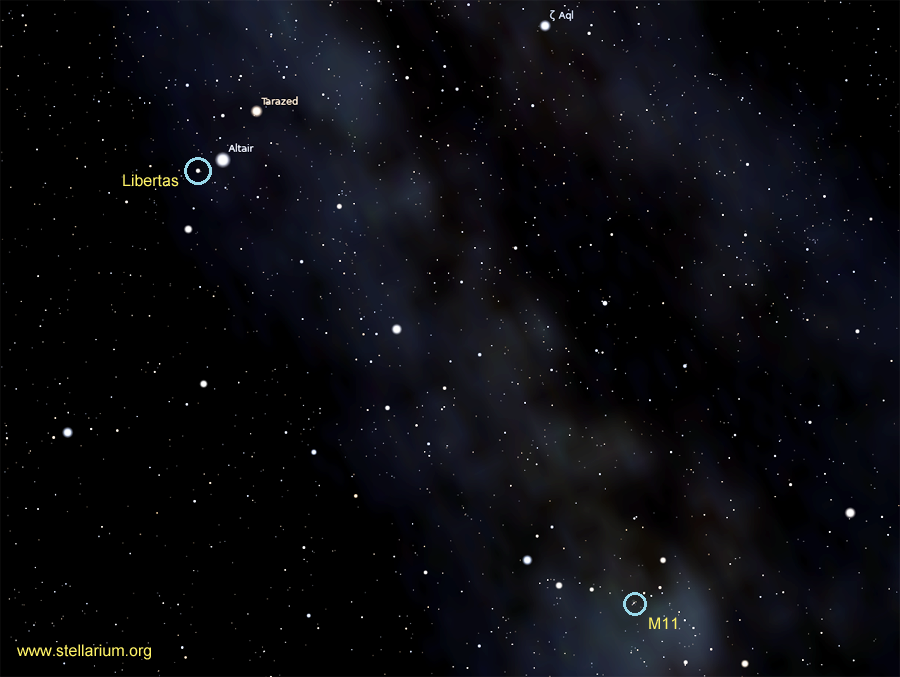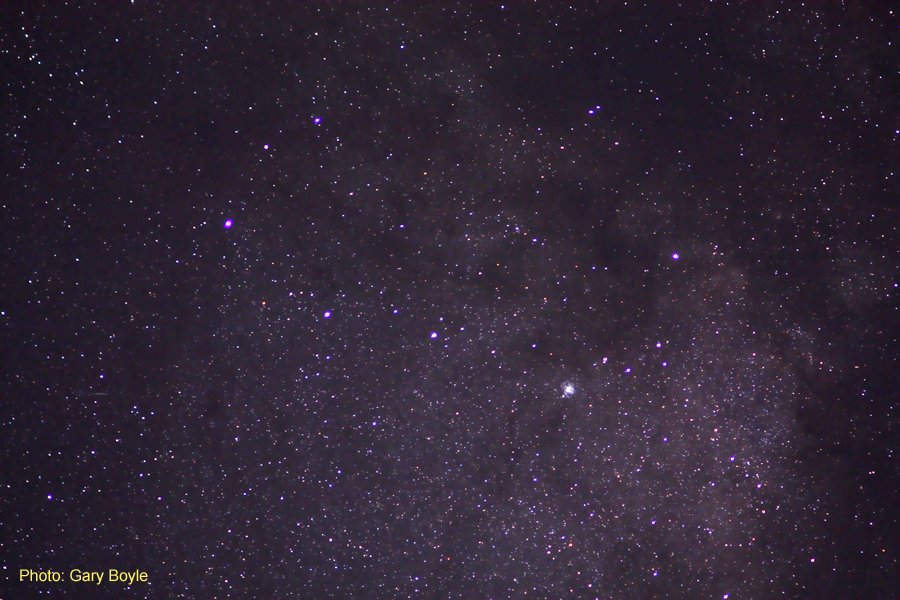Aquila The Eagle
The southernmost star of the Summer Triangle named Altair resides 16 light-years from earth. Referred as the “sweet sixteen star”, Altair rotates at 210 kilometres per second or a 100 times faster than our sun. This deforms the star causing it to be a bit wider at the equator and oval-shaped. This first magnitude sun is the brightest star of Aquila the Eagle. In mythology, the eagle belonged to the god Jupiter.
Within the borders of Aquila are nine stars with orbiting exoplanets. One is the magnitude 4.7 star named Xi Aquilae also known as Libertas which are 180 light-years from us and located to the lower left of Altair. Its lone planet named Fortitudo orbits its spectral G9 parent star every 137 days and has a mass 2.8 times that of Jupiter. Libertas can be easily seen in binoculars but try with the unaided eye on a moonless night from a dark location.
Further down the wing of the eagle is a fantastic open star cluster – M11. Commonly referred to as the “Wild Duck”, it is located 6,197 light-years away and is actually in the constellation of Scutum. Words cannot describe looking through a wide-angle eyepiece of a telescope to see the bright stars of the cluster against the backdrop of the Scutum Star Cloud. This star cloud is a view of the innermost galactic arm of the Milky Way called the Scutum-Centaurus Arm.


The annual Perseid meteor shower is underway and peaks on the night of Aug12/13. The parent comet 109/P Swift-Tuttle measures close to 26 kilometres in diameter. Such a large object produces more dusty and stony debris to occasionally produce fireballs that could light up the ground. This is a fantastic summertime shower as many people are on vacation. The bad news for this upcoming display is the moon will be 94% lit on the peak night which will drastically reduce the usual 90 meteors seen per hour to a smaller number. Although you will probably not see too many of the fainter meteors, fireballs will still dazzle you. On the same night, Saturn will be situated to the right of the moon.
Jupiter and Saturn appear on either side of the band of the Milky Way making for great wide-angle astrophotography. By the end of the month, Jupiter will set at 11:40 p.m. with Saturn setting two hours later. For the past few months, Jupiter’s Red Spot appears to be dramatically shrinking and changing shape. While viewing this change, use the table on page 235 of the RASC Observer Handbook to follow transits and shadows times of the four Galilean moons.
The planet Mars keeps sinking closer to the western horizon and will be lost in the solar glare by month’s end. But as we say goodbye to Mars, Venus is slowly moving up the western sky. The two planets are best seen together on the 23. On Aug 28 look for a thin 6% lit waning crescent moon low in the eastern sky. It teams up with the Beehive cluster and makes for a great digital moment. However, you will be battling early dawn.
The brightest comet in the morning sky is C/2017 T2(PANSTARRS). It is located east of the Hyades cluster and slowly moving towards the east. The full Ripening Moon will occur on the 15th and new moon on the 30th.
Until next month, clear skies everyone.
